This tutorial will take you through the basic structure and function of the front part of the eye.
You can navigate through this tutorial using the buttons at the top of the screen.
The tutorial will ask you questions. Click on your chosen answer to see feedback; click the answer again to make the feedback disappear. When you're finished with one page, click the navigation button for the next page to move ahead.
Have fun! Click on button '1' to see the first page of the tutorial.
Page 1
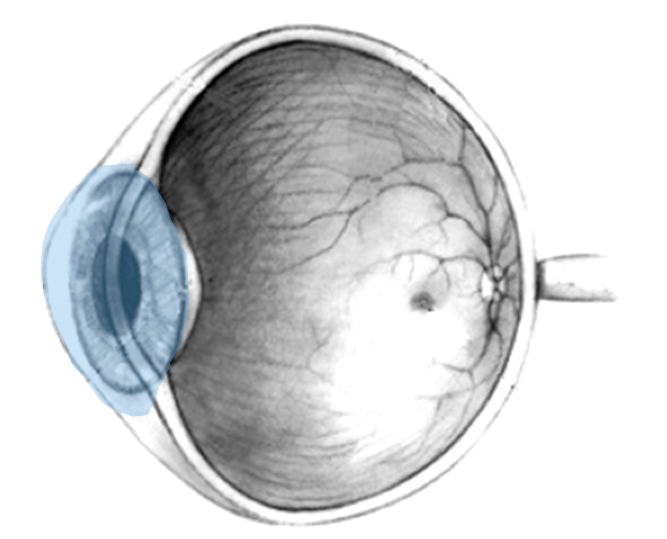
Image modified from Wikipedia. Used under a Creative Commons license
The part of your eye in front of the iris is the:
posterior chamber
pupil
anterior chamber
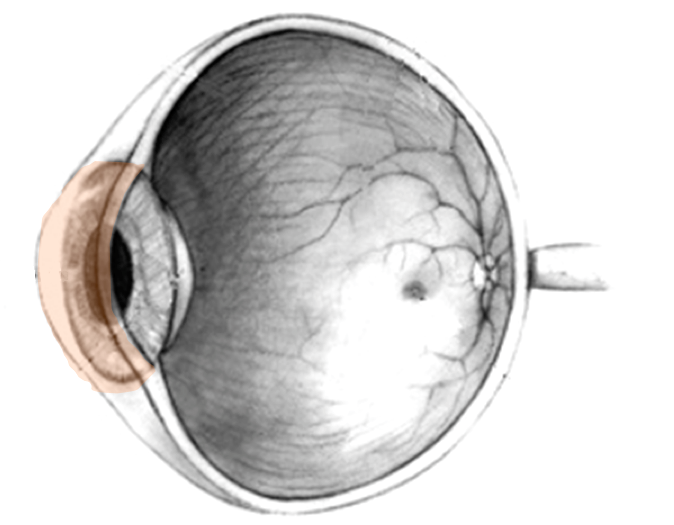
Image modified from Wikipedia. Used under a Creative Commons license
The clear layer covering the anterior chamber is the:
Light rays bend as they pass through the cornea and:
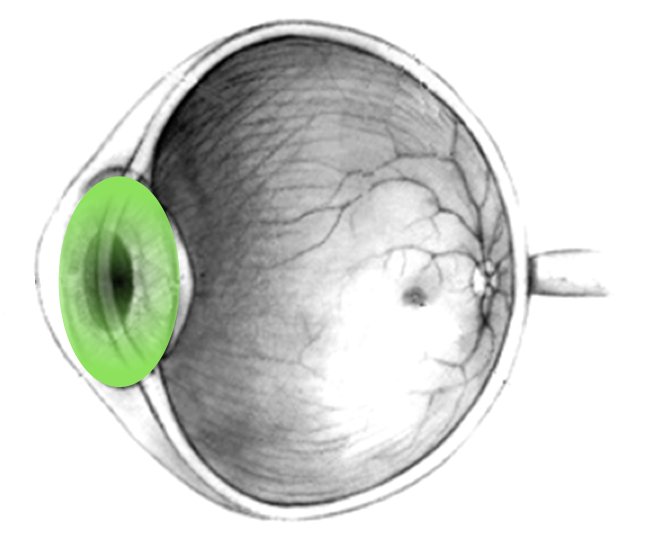
Image modified from Wikipedia. Used under a Creative Commons license
The ____ controls how much light reaches the lens
Page 2
Good work on the anatomy!

Image from Wikipedia. Used under a Creative Commons license.
The anterior chamber of your eye is all about FOCUSING light.
Focusing means bringing the light rays that have bounced off one spot on an object together again, so you see them as a sharp spot instead of a fuzzy blur.
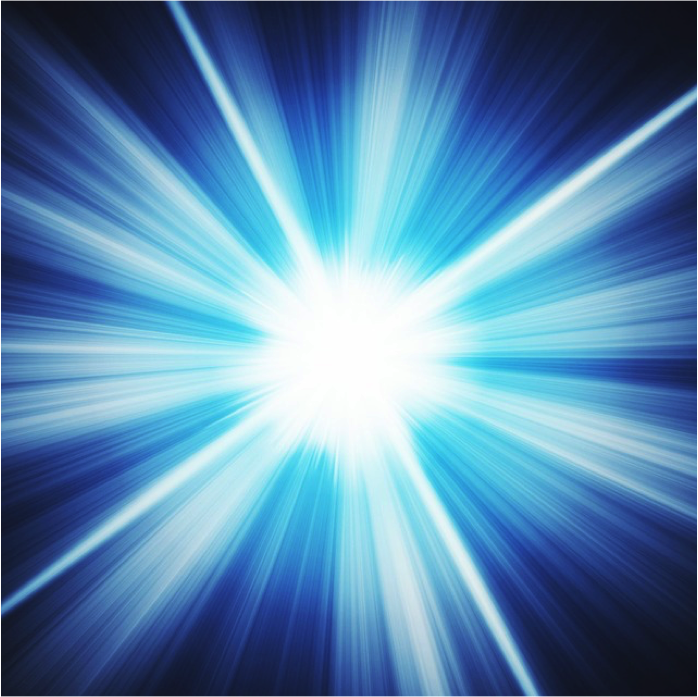
Image from Pixabay. Used under a Creative Commons license.
Page 3
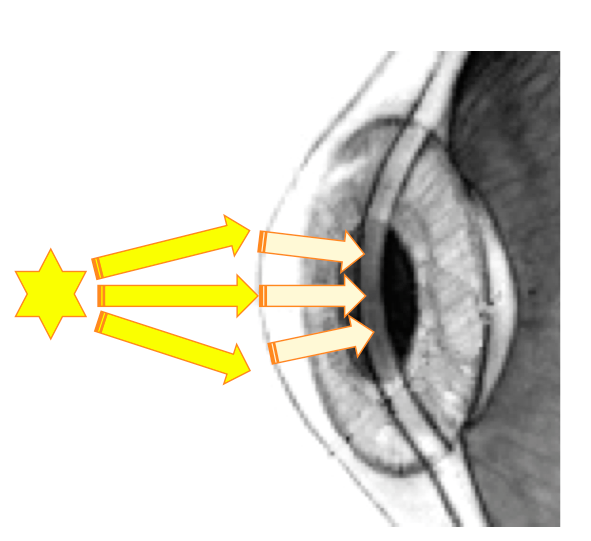
Image modified from Wikipedia. Used under a Creative Commons license
The surface of the cornea bends the light rays toward one another. How much of the light enters the eye is controlled by the iris, a ring of muscle surrounding the pupil.
In bright light, the pupil:
dilates
constricts
closes entirely
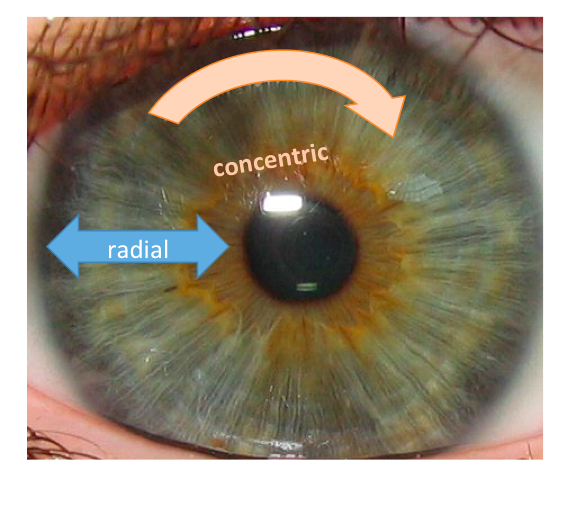
Image modified from Wikipedia. Used under a Creative Commons license
Do you see that the iris has radial fibers coming out from the pupil and concentric fibers going around the pupil? These allow the pupil to constrict and dilate.
When the _______ fibers contract, the pupil will dilate.
radial
concentric
radial and concentric
Which fibers will contract in the bright light?
radial
concentric
radial and concentric
Which fibers would be stimulated by the sympathetic system?
Page 4

Image modified from Wikipedia. Used under a Creative Commons license
The cornea only begins focusing the light. The light rays are bent further toward one another as they pass through the lens. One advantage of the lens is that its shape can be adjusted, so the amount it bends the light can be adjusted too.
If the lens becomes flatter, light rays will bend ___ as they pass through it.
Page 5
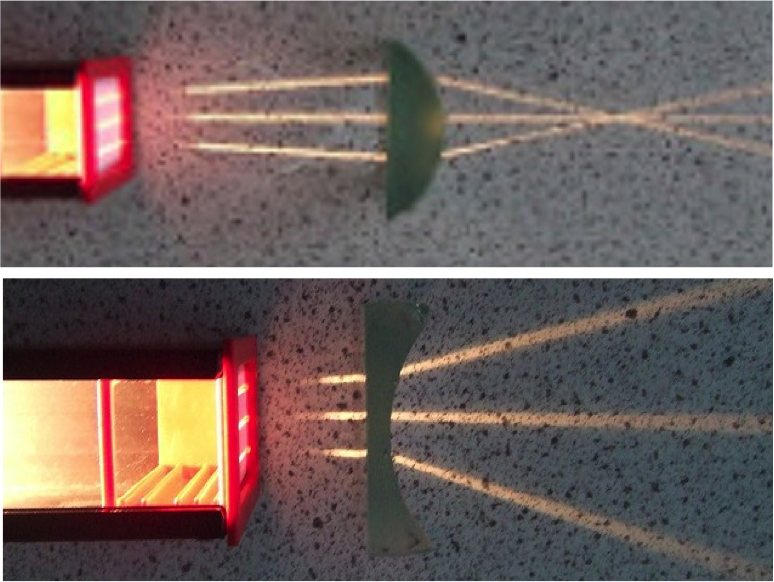
Image modified from Tessa Johnson, 2007 Used under a Creative Commons license
A convex, curved lens bends light rays toward each other more than a flat piece of glass or a concave lens. The lens in your eye never becomes completely flat – but it can become flatter, and then the light rays don’t bend as far toward each other.
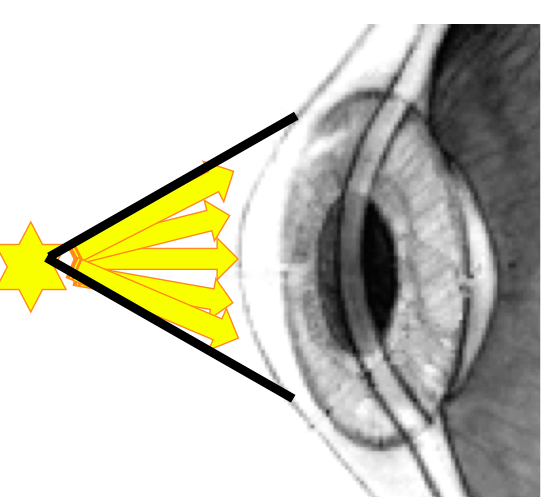
Image modified from Wikipedia. Used under a Creative Commons license
Why would you ever want to make your lens flatter or rounder? It has to do with the light rays entering your eye. Here are light rays coming from a very close object into your eye. Look how slanted the top and bottom rays are!
To focus these rays, your lens will need to be:
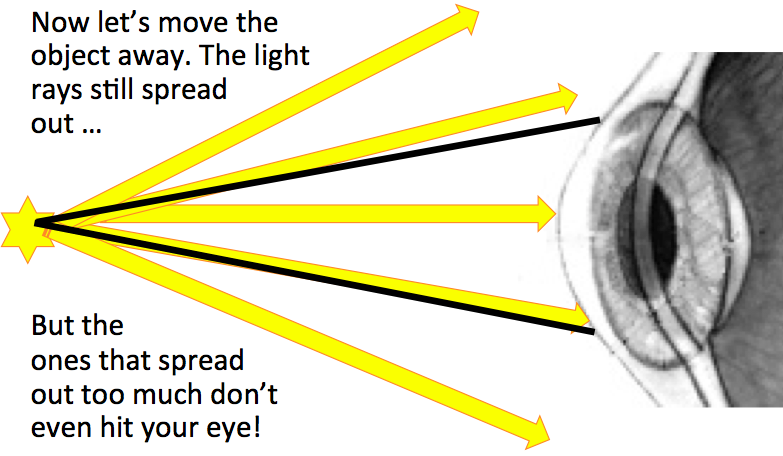
Image modified from Wikipedia. Used under a Creative Commons license
The light rays that hit your eye from this faraway object are not very slanted. Or that is, they spread out just like the light rays from the nearby object - but by the time they reach your eye, the rays that are slanting up and down have spread so far apart, they don't hit your eye. The rays that DO hit your eye are the ones that weren't slanting very far upwards or downwards.
To focus on an object far away, the lens should be:
Page 6
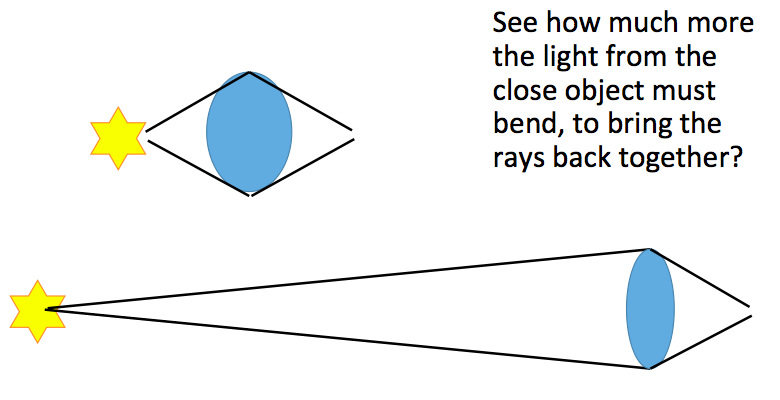
So in summary:
When you look at something close, the light rays from it are diverging from each other a lot by the time they hit your eye. Your lens needs to be rounded to bend them back together.
When you look at something far away, the light rays that are diverging get so far apart by the time they reach you that they don't even hit your eye! The rays hitting your eye are closer to parallel, and don't really need to bend very much in order to focus. Your lens needs to be flattened.
How do you change the lens shape? By pulling on the edge of it. Your lens is hard, but it's not a rock; you can actually pull it into a different shape, though as soon as you let go it will bounce back to its round shape.
Pulling on the edge of your lens would make it:
Page 7
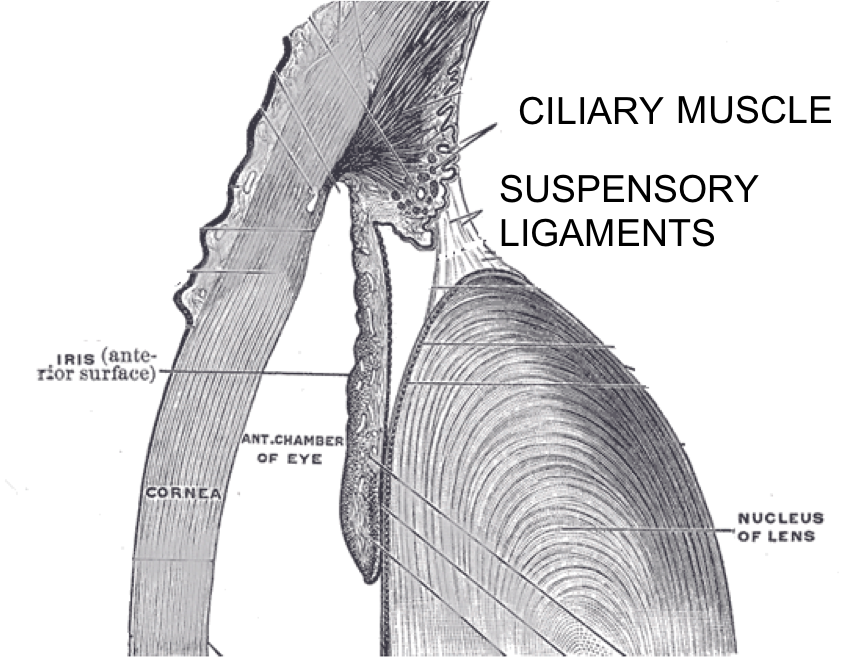
Image modified from Wikipedia. Used under a Creative Commons license
Here’s one edge of your lens. See the cornea at the far left, the lens at the right, and the iris in front of the lens?
Now, see the strands attached to the upper edge of the lens, holding it in place?
These are SUSPENSORY LIGAMENTS. These ligaments attach to your lens all round its edges. They are what keep the lens in position, just behind the pupil. One end of each ligament attaches to the edge of your lens, and the other end attaches to a ring of muscle – the CILIARY MUSCLE.
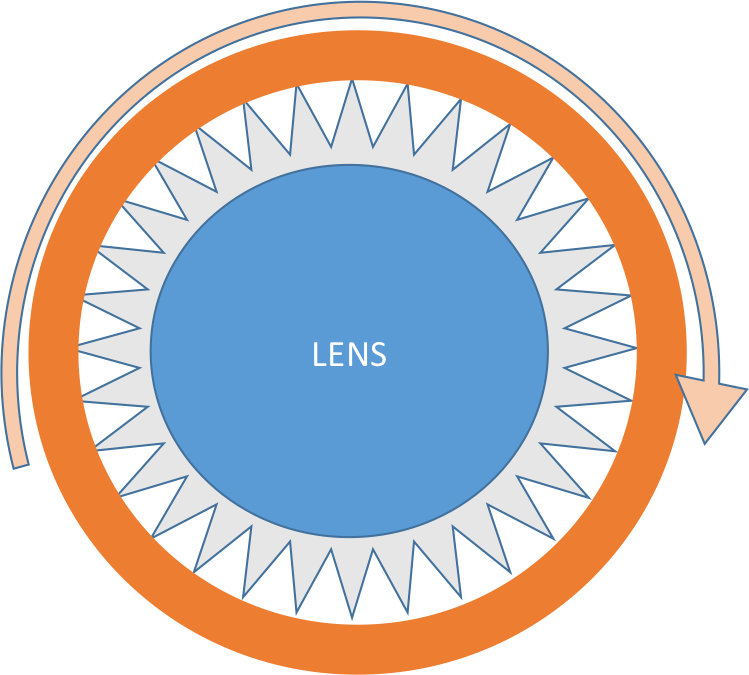
This diagram shows the same thing from behind the lens. The lens is the blue circle and the orange ring around it is the ciliary muscle, made up of concentric fibers. The suspensory ligaments go all around the lens attaching to its edges, connecting it to the ciliary muscle.
The lens 'hangs' inside this ring of ciliary muscle and suspensory ligaments, sort of the way the planet Saturn hangs inside its rings. Except that the lens is attached to these rings - and the rings can get bigger or smaller.

Image from Wikipedia. Used under a Creative Commons license
Page 8

Image from Wikipedia. Used under a Creative Commons license

Now look again at the structure of that ring of muscle around the lens. The muscle fibers are concentric, like a drawstring. If I wanted to pull the lens out flatter, should I constrict these fibers or relax them?
If you were looking at something up close, you would need to bend the light rays entering your eye a lot / a little and your lens would need to be rather flattened / rather rounded. To do this, you would have to constrict / relax the concentric fibers in your ciliary muscle.
Page 9
We’ve gone over the functions of the cornea, iris, lens, and ciliary muscle.
But what about the stuff that fills the anterior chamber – the aqueous humor? This watery fluid leaks out of blood vessels and carries food and O2 to the transparent structures of your eye. You can't use blood vessels to feed these tissues, because blood would block the light.
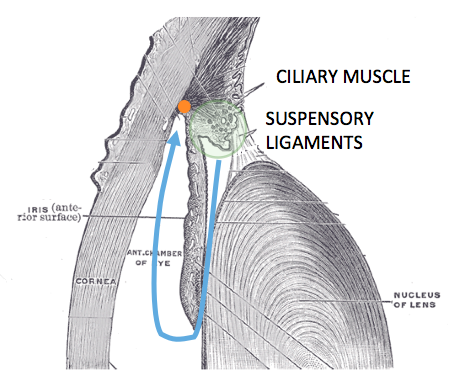
Image modified from Wikipedia. Used under a Creative Commons license
In the anatomy diagram, you can see the lens and the suspensory ligaments and ciliary muscle supporting the lens. In front of the lens, you can see the iris and the anterior chamber in front of that, with the cornea covering it.
The aqueous humor is formed from blood vessels at the base of the ciliary muscle, behind the iris. It flows over the surface of the lens, between the lens and the iris, carrying food to the lens. Then it circulates in the anterior chamber, carrying food to the cornea. Then it’s reabsorbed into the Canal of Schlemm which runs around the eye in the base of the iris. This canal will then return the fluid to the blood.
Too much aqueous humor can cause high pressure in the eye, called glaucoma.
This is the end of the review of the front of the eye – the part that deals with focusing images and controlling the amount of light that enters the pupil.
Now you should be ready to look at the back of the eye in Vision part 2 – the part where nerve cells actually fire in response to that light, sending messages to your brain!
This tutorial is based on material from Fox, S.I., 2013. Human Physiology, 13th ed. McGraw-Hill.